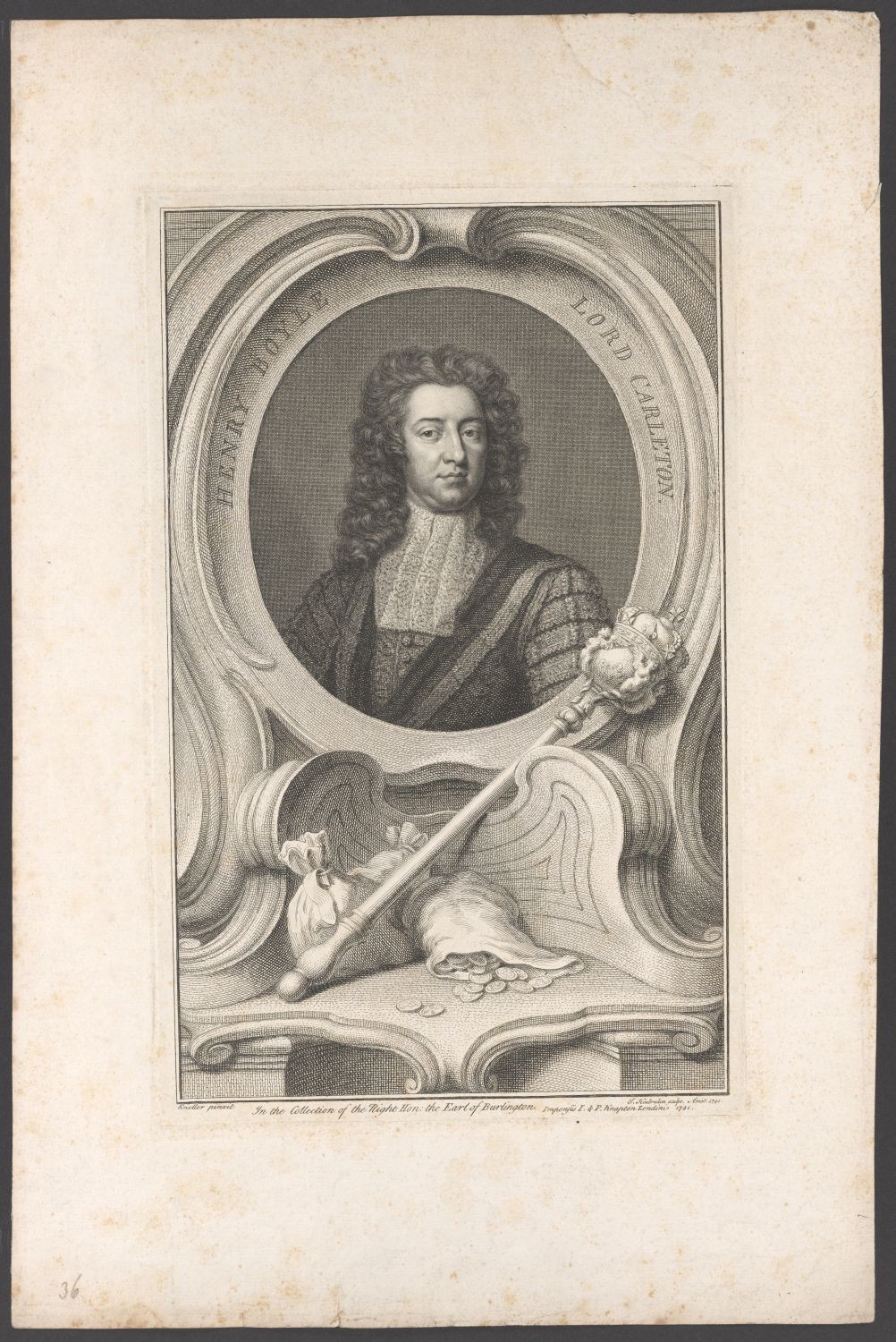Porträt von Henry Boyle, 1. Baron Carleton. Der anglo-irische Politiker wird hier als Brustbild nach links gezeigt. Seinen Kopf hat er nach rechts gedreht und sein Blick mustert den Betrachter. Seine Kleidung mit Jabot wirkt edel und er trägt eine lange, gelockte Perücke. Das Bildnis ist in eine ovale, sehr plastisch wirkende Kartusche gefasst, in deren Innenrand eine Inschrift eingearbeitet ist. Vor dieser Kartusche gibt es eine kunstvolle Aussparung, auf der mehrere Säckchen mit Münzen liegen und ein königliches Zepter lehnt, was auf seine Tätigkeit als Finanzminister im englischen Parlament verweist.
Henry Boyle war der Sohn von Charles Boyle, sein Bruder war ein Förderer Georg Friedrich Händels, Richard Boyle, von dem sich ebenfalls ein Blatt in der Stiftung Händel-Haus befindet. Seine Ausbildung erhielt er an der Westminster School und am Trinity College. Er trat dann in die britische Armee ein, verließ sie aber schnell wieder. Er brachte einige Jahre auf seinen irischen Familiengütern zu, bevor er sich in die Politik begab. 1701 beispielsweise wurde er Finanzminister von England. 1714 wurde er in den Adelsstand erhoben.
Das Blatt wurde als Kupferstich von Jacobus Houbraken (1698-1780) 1740 gestochen. Als Vorlage nutzte er ein Gemälde des englischen Malers Godfrey Kneller (1646-1723), das dieser 1703 schuf. Es befindet sich heute in Hardwick Hall in Derbyshire.
Bei dem Blatt handelt es sich höchstwahrscheinlich nicht um den Erstdruck von 1741 von Paul und John Knapton, Londonder Buchhändler und Publizisten, sondern um ein herausgelöstes Blatt aus der Publikation "The Heads of Illustrious Persons of Great Britain" von Thomas Birch in London 1747. Das British Museum in London besitzt ein Exemplar des Blattes, die National Portrai Gallery besitzt vier Exemplare.
Signatur: Kneller pinxit. J. Houbraken sculps. Amst. 1740. | In the Collection of the Right Hon: the Earl of Burlington | Impensis I. & P. Knapton Londini 1741.
Beschriftung: In der Kartusche (ovaler Rahmen): „HENRY BOYLE LORD CARLETON.“
Quelle, Literatur, Dokumentation: Thomas Birch, The heads of illustrious persons of Great Britain : engraven by Mr. Houbraken, and Mr. Vertue… London : printed for John and Paul Knapton, 1747, vor S. 153–155. ; Nicolas Tindal, The Continuation of Mr Rapin de Thoyras’s History of England … 2. Ed., vol. II., London 1751, vor S. 55. ; Henry Bromley, Catalogue of engraved British portraits …, London 1793, IX, S. (207) ; Konrad Sasse [Hrsg.], Katalog zu den Sammlungen des Händel-Hauses in Halle, 2. Teil: Porträts, Halle 1962, S. 47.
en

